Matt Barton on his Aquaponics Installation at Understudy

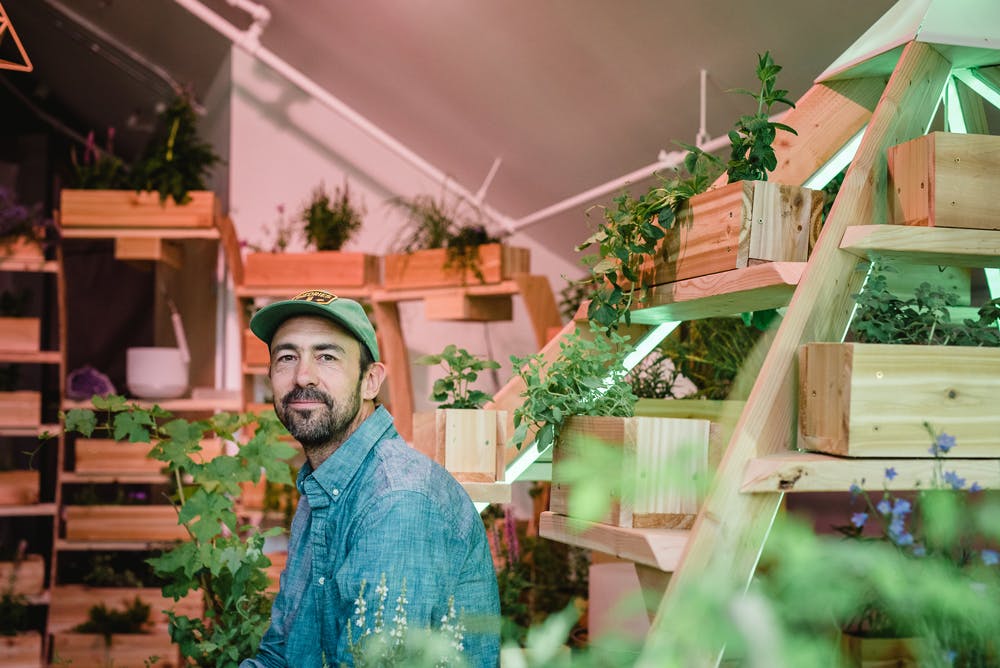
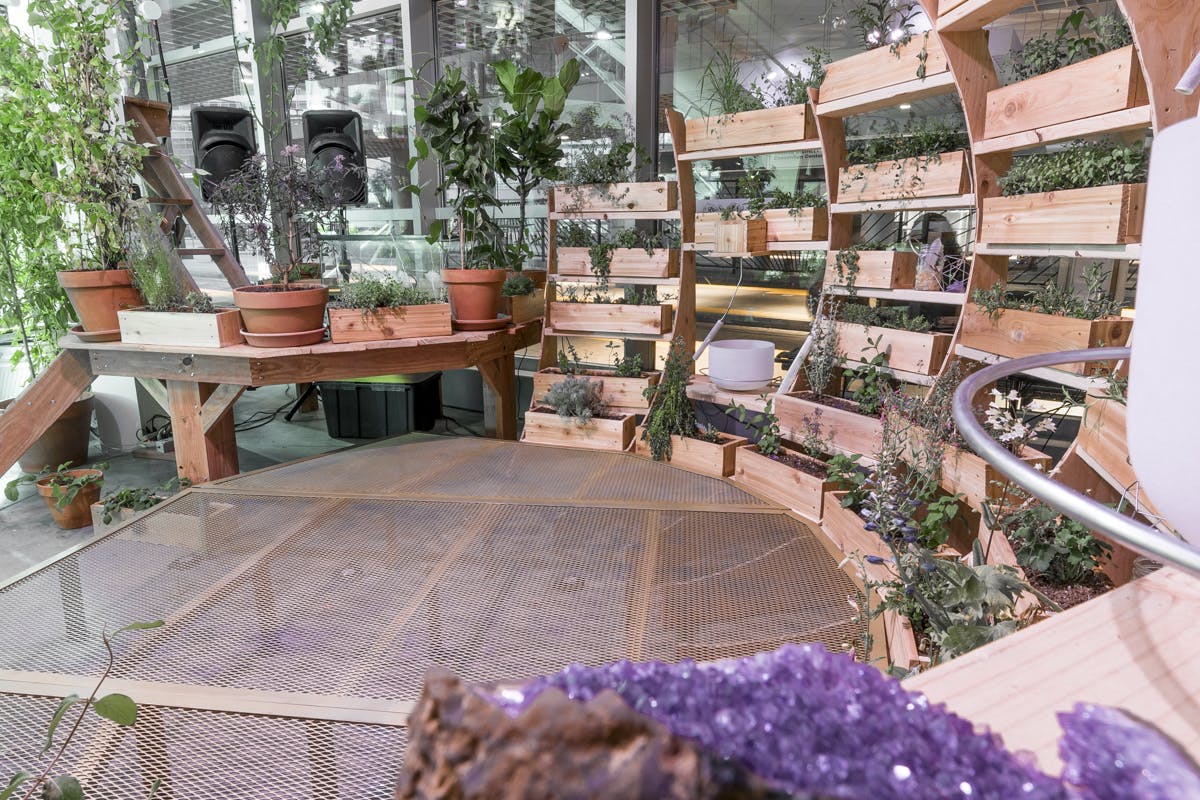
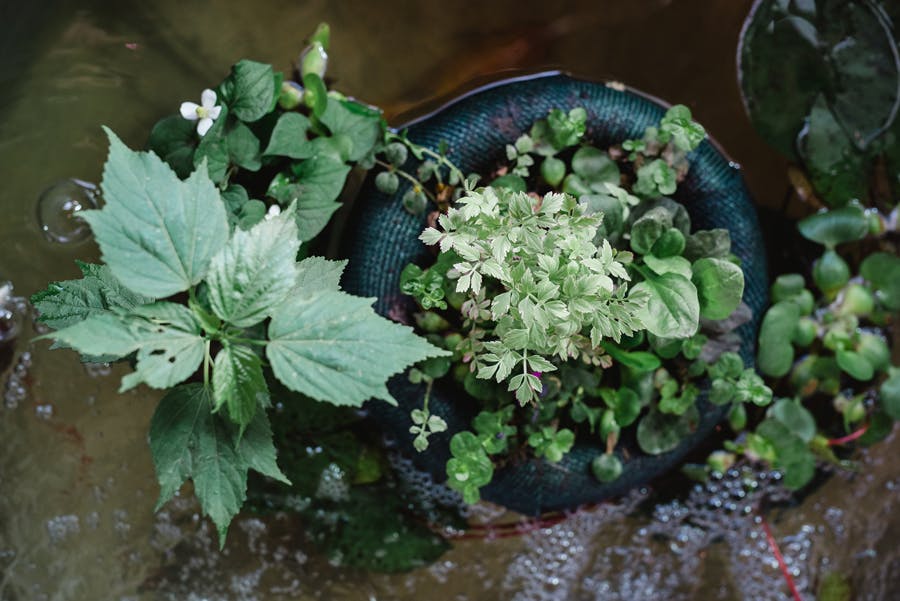
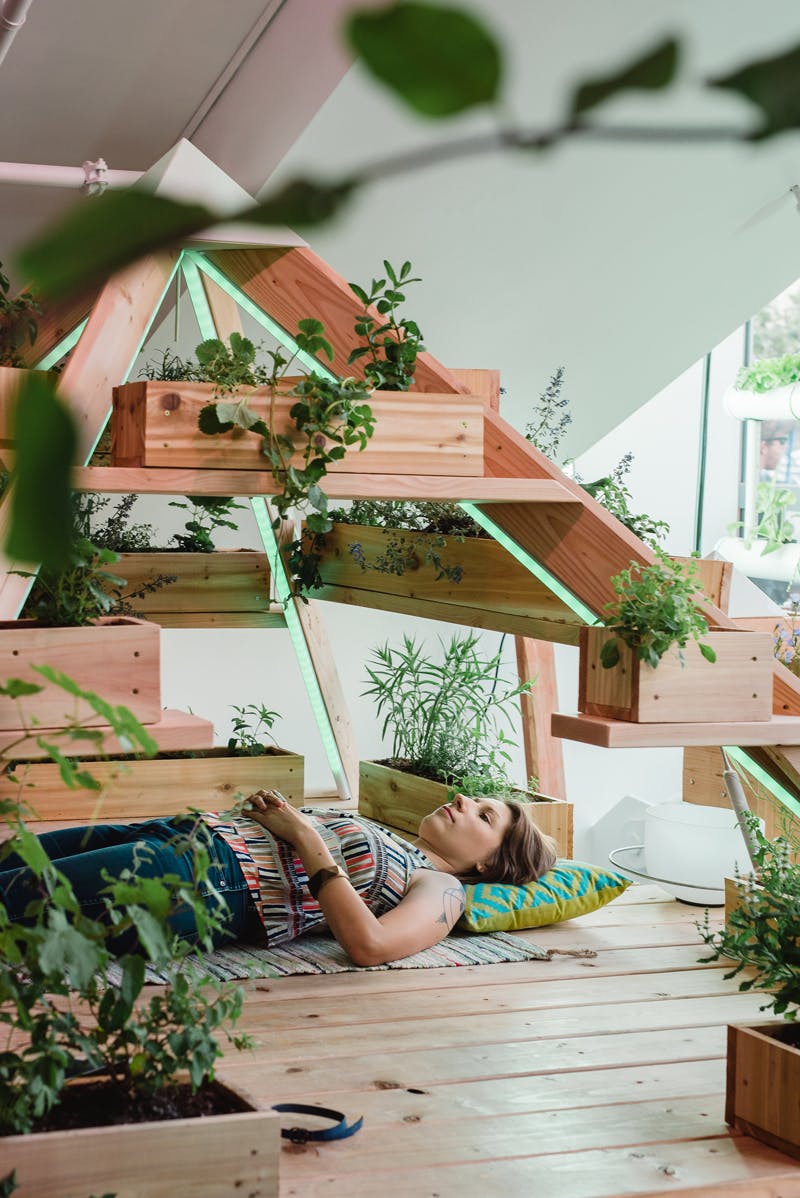

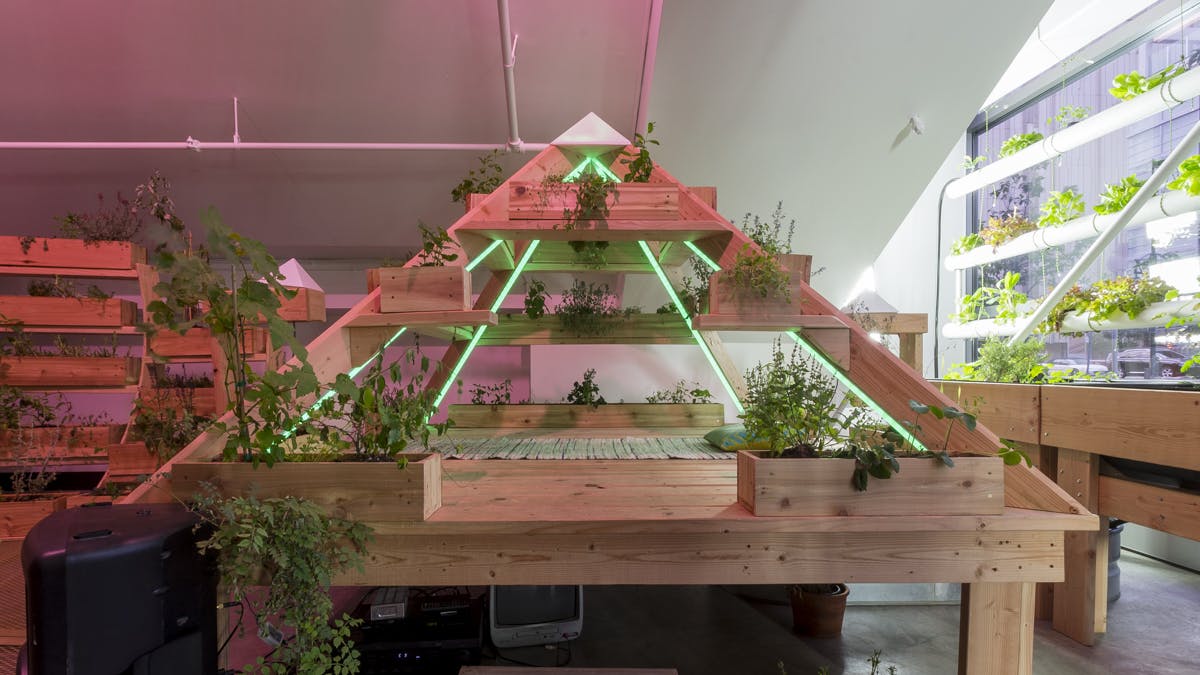
Cortney Lane Stell, Black Cube’s Executive Director + Chief Curator, interviews Colorado Springs artist, Matt Barton, on his interactive aquaponics installation Soft Something at Understudy, as part of a city-wide project with the Denver Theatre District.
Matt Barton on his Aquaponics Installation at Understudy
Colorado Springs-based artist Matt Barton just closed an exhibition titled Soft Something at Understudy (part of the Happy City Denver project produced by the Denver Theatre District and art directed by us, Black Cube). Understudy is an experimental space arts and culture, located in Downtown Denver at the Colorado Convention Center, adjacent to the light rail stop and under a Convention Center escalator. Matt’s installation transformed this dynamic space into a participatory installation that blurred the boundaries between a gallery, greenhouse, and sanctuary.
At the entry of the exhibition is a custom-built aquaponics installation, where visitors find an integrated system composed of aquaculture (raising fish) and hydroponics (the soil-less growing of plants in water). In this symbiotic system, the fish waste provides an organic food source for the plants, and the plants naturally filter the water for the fish. Building on this network, Barton’s addition of experimental sound and sensing technologies channel the plants’ response to the interior conditions by transmitting audio to visitors.
We spoke to Matt about this exhibition and his wider practice…
Cortney Lane Stell: Tell us about your site-specific installation Soft Something.
Matt Barton: This exhibition was a response to the site and the “Happy City Denver” theme. I was thinking of a deeper state of happiness, like contentment, and things that came to mind were a sense of community/interconnectedness and a connection to nature. Relationships to humans are great, but I was interested in working with plants and plant presence and how we interact with them differently. Plants have a fundamental life force that side steps whatever cultural moment we are experiencing and maintains some sort of steady, calm presence. The site made sense with this too as it feels like a greenhouse.
CLS: The Understudy space is quite unique, there is a lot of glass and it has a slanted ceiling (which is the bottom site of an escalator in the Convention Center). Can you tell us how you chose to approach this unconventional exhibition space?
MB: That was very exciting. The space is really unique and I wanted to go work with the architecture and windows. I knew I wanted to exploit the high ceiling on the one side and create sort of a “hug” with the rest of the structures, enclosing the space with plants.
CLS: How did you come to the title? It’s quite curious, and hard to pin down.
MB: I was thinking of semi-permeable membranes, and the transfer of energy between people and things. The distinctions aren’t as rigid as we often think they are. The subtle body (energetic, non-physical) is a refreshing concept is regards to the sense of individualism and isolation common in our society. We interact in far more ways than we realize and it’s good to reflect on the interconnectedness sometimes. Thich Nhat Hanh’s translation of the Buddhist text “The Heart Sutra” is one of my favorite readings and he uses the verb “Interbeing.” We Inter-Be with everything. There is no separation. “Soft Something” is also attractive as a counter to all the emphasis on being hard or “strong” in a traditional sense. I like the saying the word “soft” several times in a row. It’s fun. It almost feels subversive for some reason.
CLS: Part of preparing for the exhibition was learning about aquaponics systems. Why were they an important part of this installation and what was the learning process like?
MB: The aquaponics component was meant to be a more concrete, scientific entry point into the concept of mutualism, symbiotic relationships, and harmonious interaction. From there I hoped the idea bled into the viewers’ experience of the rest of the space, being surrounded by plants, sound, and one another. I could then push some less demonstrable notions of systems, or relationships with the aquaponics as a foundation. I also liked the sound of the water flowing through all the different structures and the space. It seemed to have a connection to the other sound in the space, as the sounds flowed together, through the space, the plants, and the viewers. Sound was a big element in demonstrating a shared experience between people and plants, as we feel it vibrating the surfaces, we understand that it passes through us, and everything things else around us, making a tangible connection between disparate nouns. The sound in the space could be seen as exemplifying the “Soft Something”, or a threshold between the physical and non-physical.
The learning process was a significant. I had to cram. It was a bit of a gamble and I definitely questioned my judgment on that decision, but it worked out and many of the passers-by were excited about the aquaponics and didn’t seem to notice the rest of the show. Some thought it was a plant store.
CLS: Your work is both open and critical of emergent theories and practices. Can you tell us a bit about some of the experimental practices that took place in the exhibition, such as the technologies that allowed visitors to listen to and interact with plants?
MB: The interface that translated the electrical frequencies of the plants into a MIDI signal that then controlled the sound in the synthesizers is an off the shelf product that seems to be trending very much right now, but has been around for decades. I wanted to use it to trigger viewers’ perception of the rest of the space covered in plants, and then expanding beyond to the plants outside, and then to other people and everything everywhere. I also wanted to mess with the technology a little and confuse the viewer, instigating questioning, seeing how far they might go with it. The aquaponics is “real.” The plant sensors are credible and the audio changes noticeably when you touch the plants. What about a crystal attached to a copper platonic solid with a wire running into a plant’s soil? What about the TV antenna in the fish tank with the crystals? The delightful surprise was that the crystals also contributed to the circuit when they were connected to the plants and the audio changed significantly.
CLS: Some of this work built off of older works. Can you describe a few of them and how they relate to this project?
MB: I recycled a pyramid with crystal singing bowls from a show that was trying to create more of a dream-like alternate universe. This show brought in what was very direct and “real” from that work and integrated it with all the living plants/systems. It was refreshing to build this show from living organisms, in comparison to much of my past work that uses illusions and very blunt artificiality. It felt good to go beyond the theatricality and artifice and use such a commonplace, real thing (plants) to go after similar intentions of my other work.
CLS: Can you describe your studio?
MB: My studio is a mix of work space, storage space, and play area (drums and skateboard half-pipe). Whatever needs to happen in there can happen. It’s a large steel arched “Quonset hut.” I can build large scale installations in there in sections, set up lighting for video work, stage materials and frame or construct an addition for my house. It’s always changing. It is all mixed up with other aspects of my life.
CLS: Name the most memorable exhibition that you’ve attended.
MB: Zee by Kurt Hentschlager at Wood Street Galleries, Pittsburgh. The documentation can’t capture it. It was perceptually very confusing.
CLS: Aside from the visual arts, what motivates your practice?
MB: I like music. I think I’m always trying to get at some sort of directness of live music with my work while putting the viewer into the position of audience and player. I’m interested in lots of things from science and technology to politics to popular culture, but I think I always focus my work into some sort of delusional, yet hopeful form of spiritualism or something related to the body and some type of otherworldly non-physical reality.
CLS: What do you watch and/or listen to while working?
MB: The band SUUNS seems to always take over the studio when I’m making a big push on a project. It gets me going.
CLS: Can you name an instance when an exhibition and/or artwork did not go as planned?
MB: I tried to critique cultural appropriation once and was curious if people would get it or just get into it. I made it pretty confusing and for the most part the viewers didn’t even flinch. They mainly perpetuated the appropriation in an exaggerated way. It was interesting and was what I was curious about, so it did go as I “planned” but maybe too much so. Surprisingly, and maybe a little disappointingly, most of my projects get pretty close to where I envision and work towards. There are always a ton of problems to solve but I figure it out. This answer to your question makes me feel like I’m not pushing myself far enough. I joked about a large outdoor, interactive dome structure going terribly wrong, falling over, hurting people, etc. calling it D’oh-m, like Homer Simpson’s “D’oh” reaction to when he does something stupid. That thing ended up surviving the catastrophic St. Thomas fire in Ojai last Summer while the whole hillside burned. I think I get lucky a lot. It always feels like that formula, a lot of planning and hard work, and a ton of luck.
